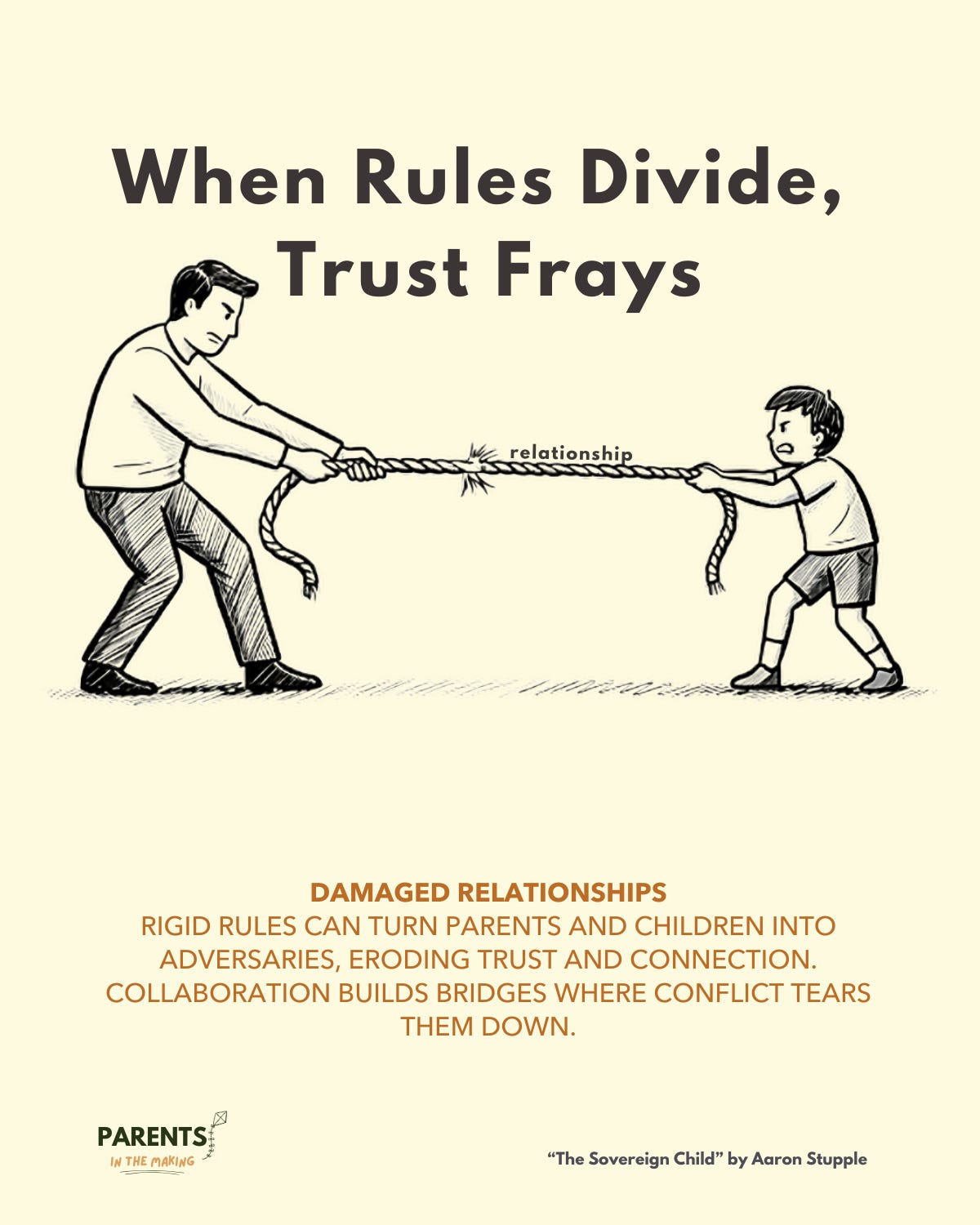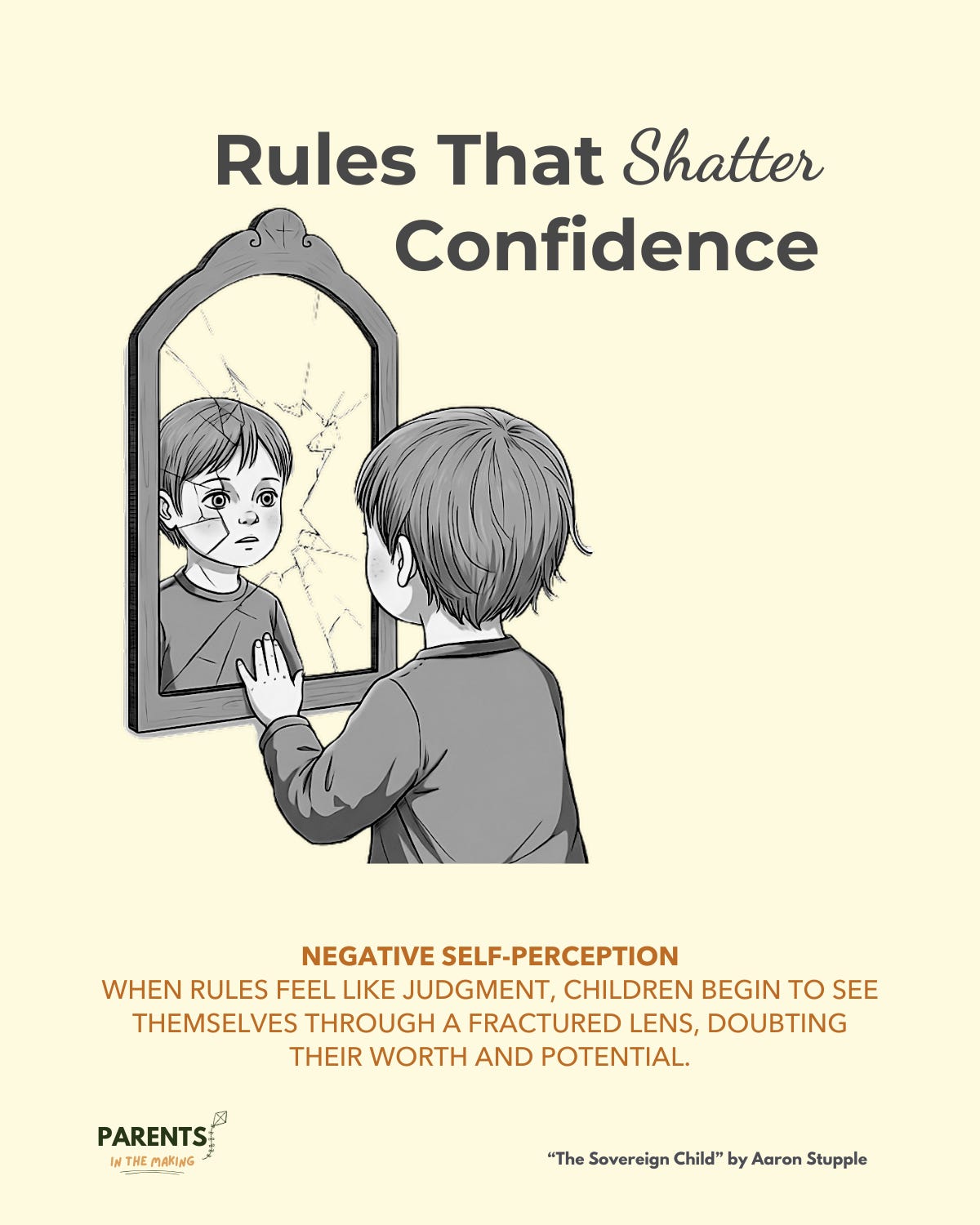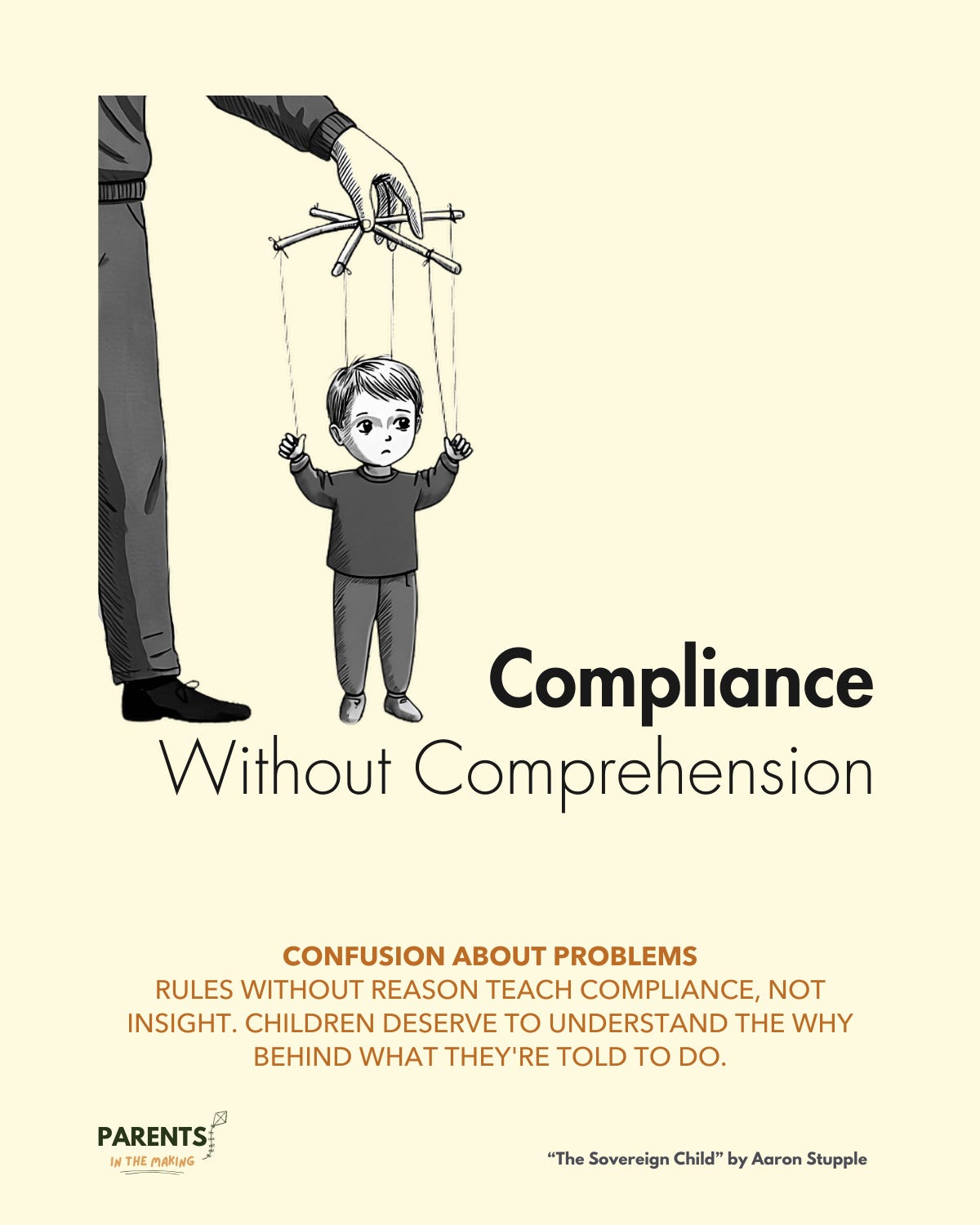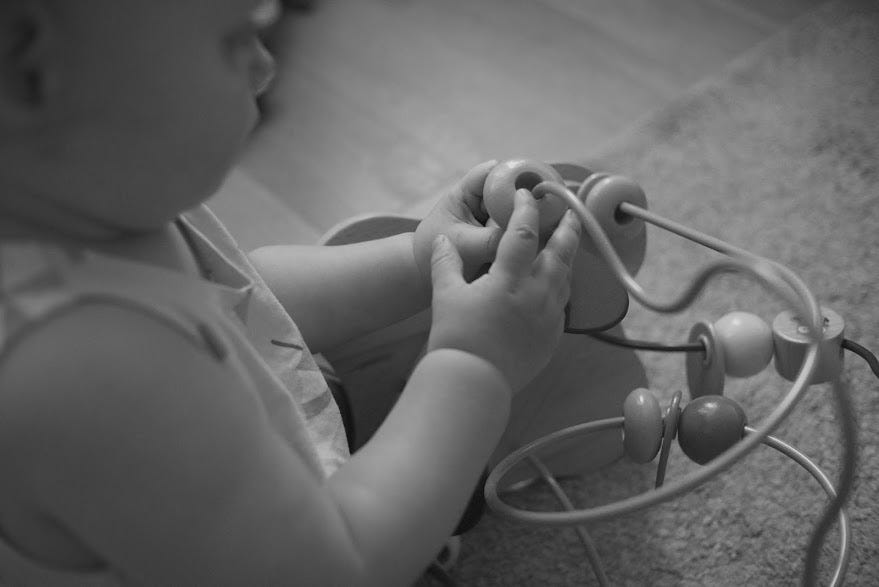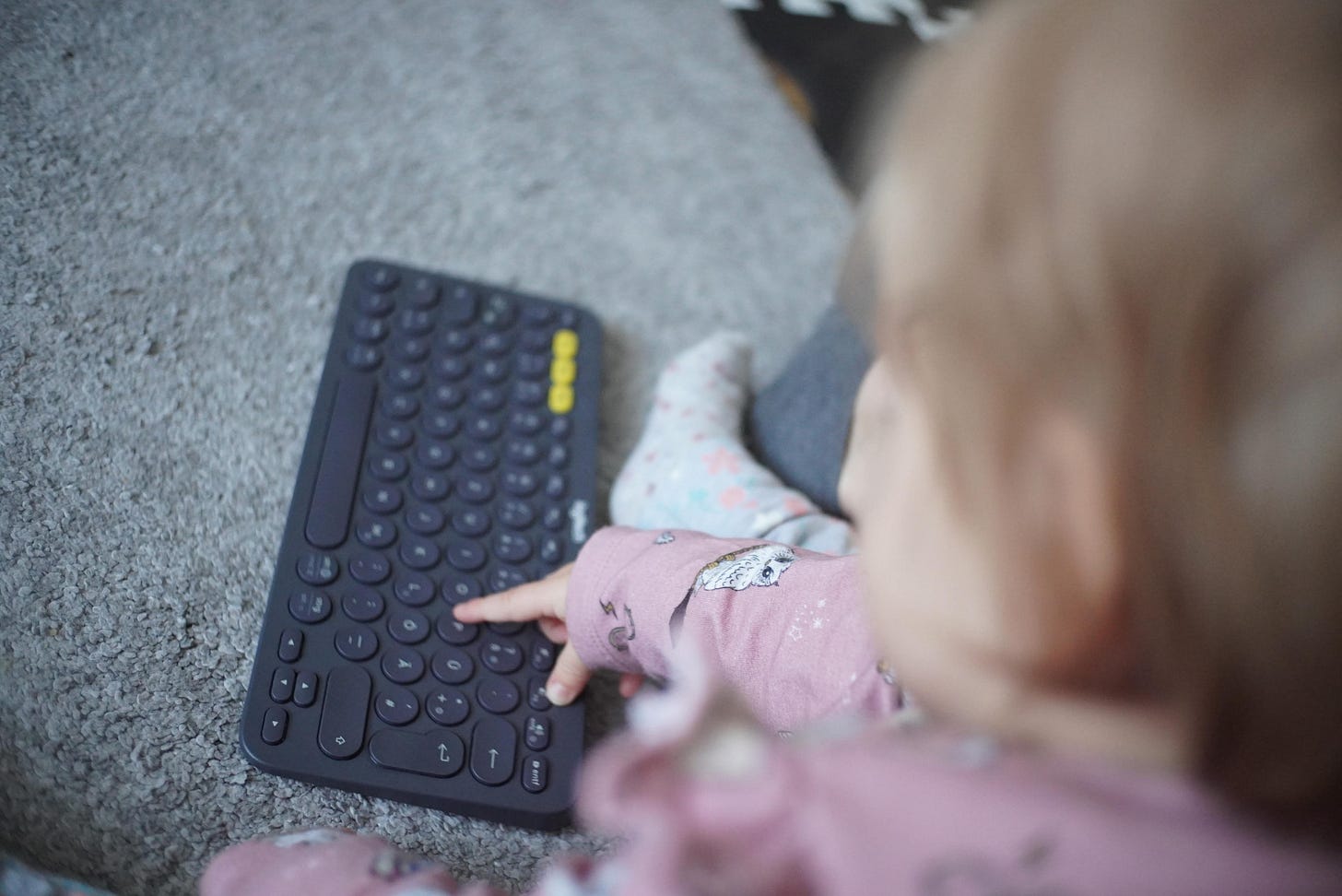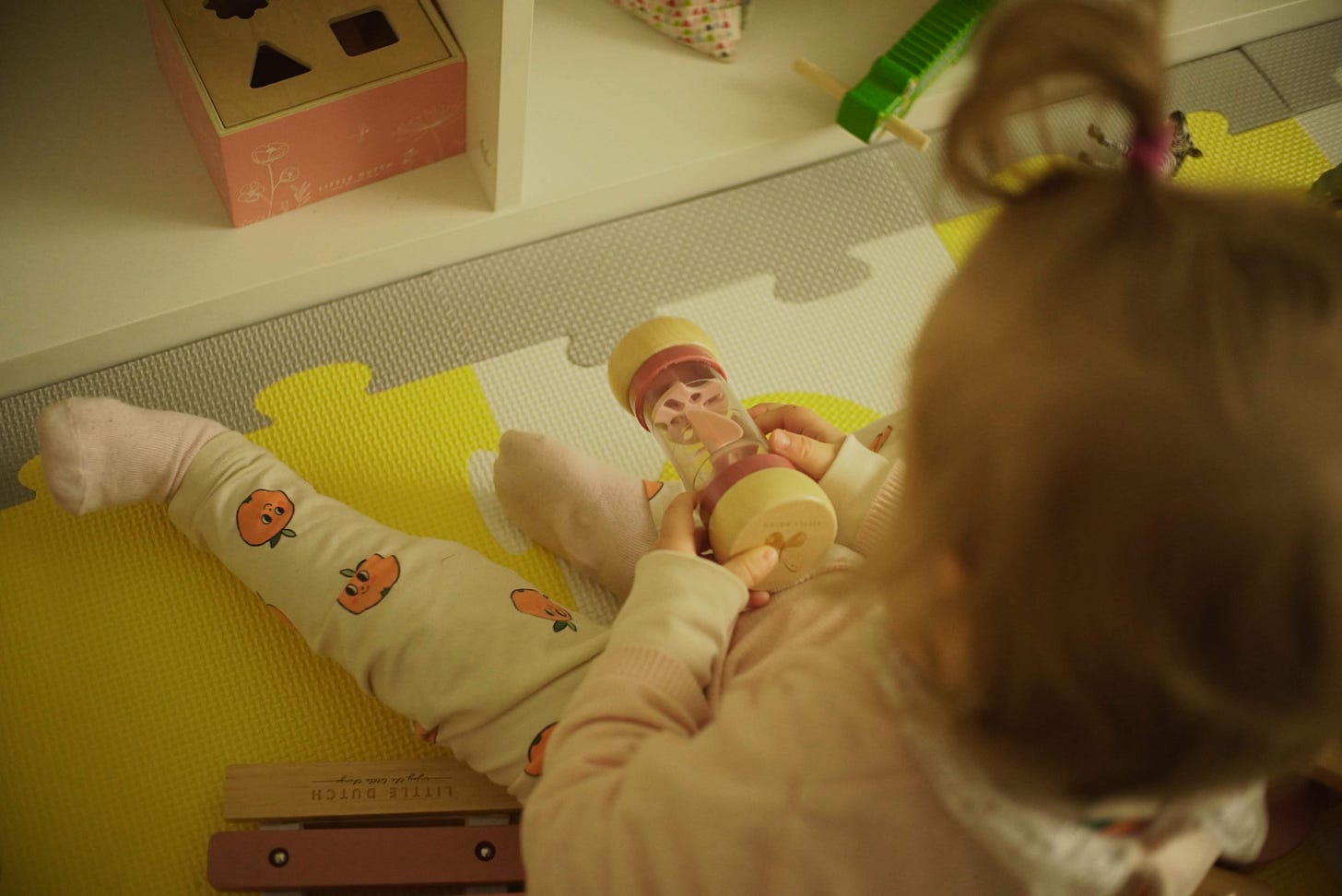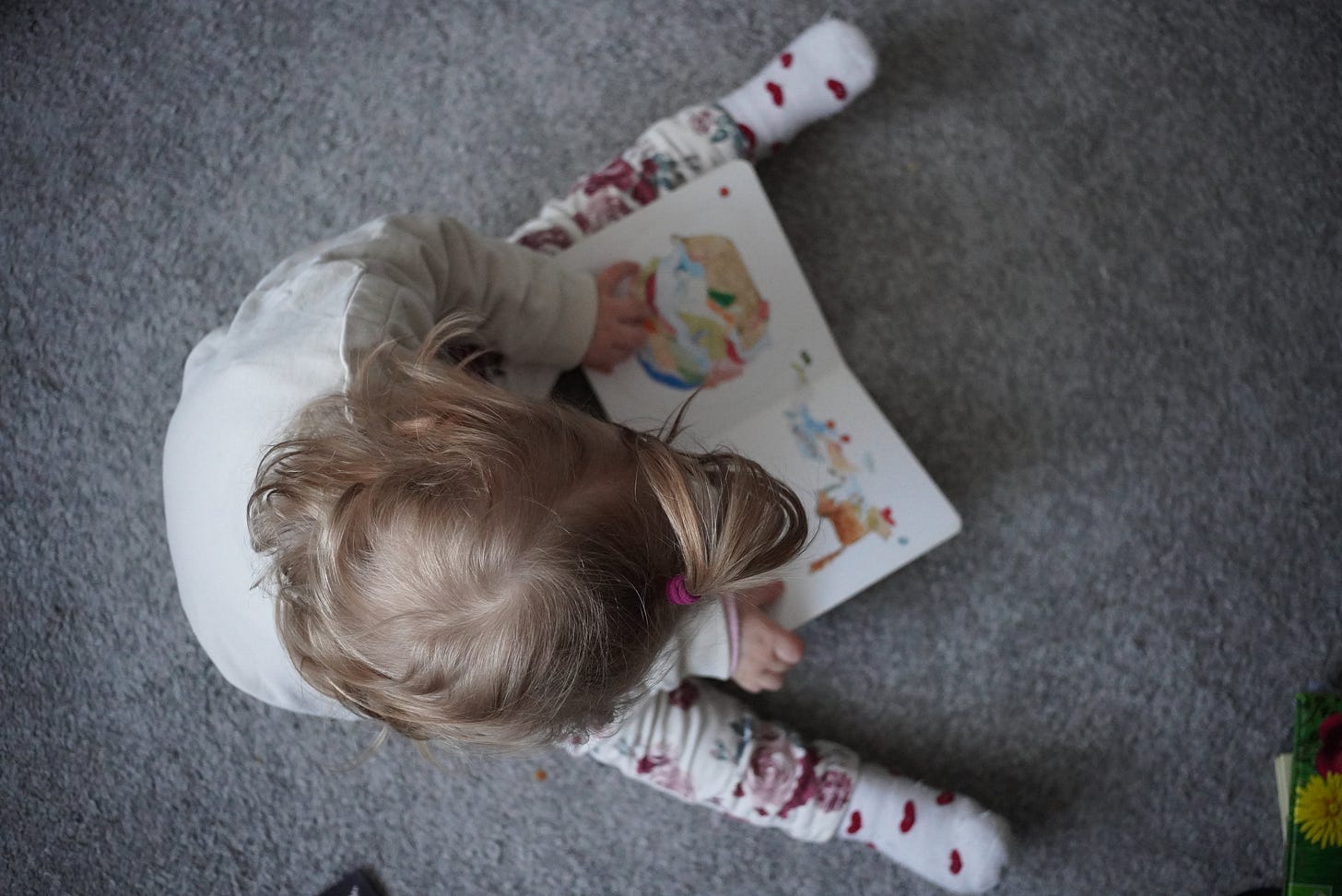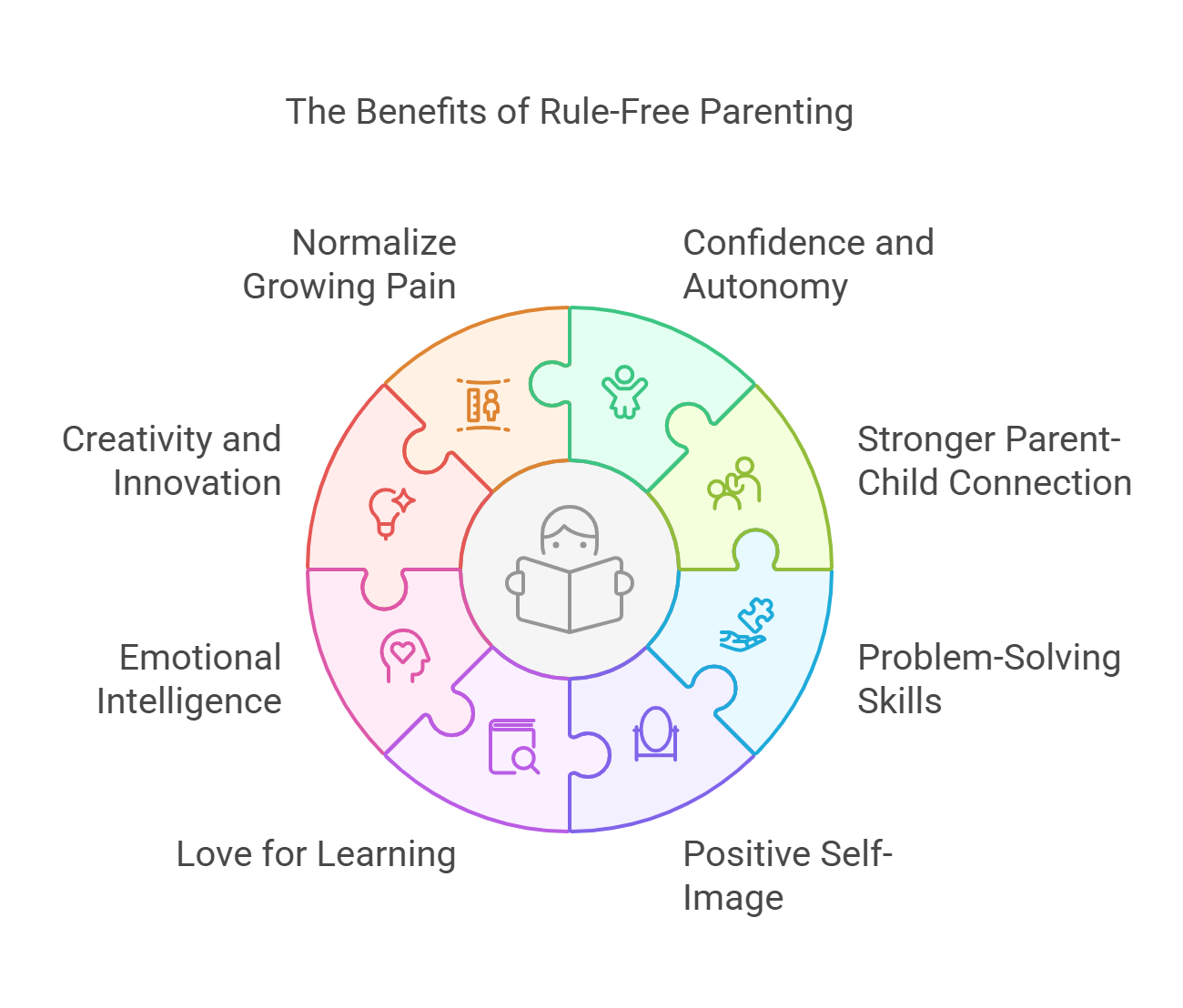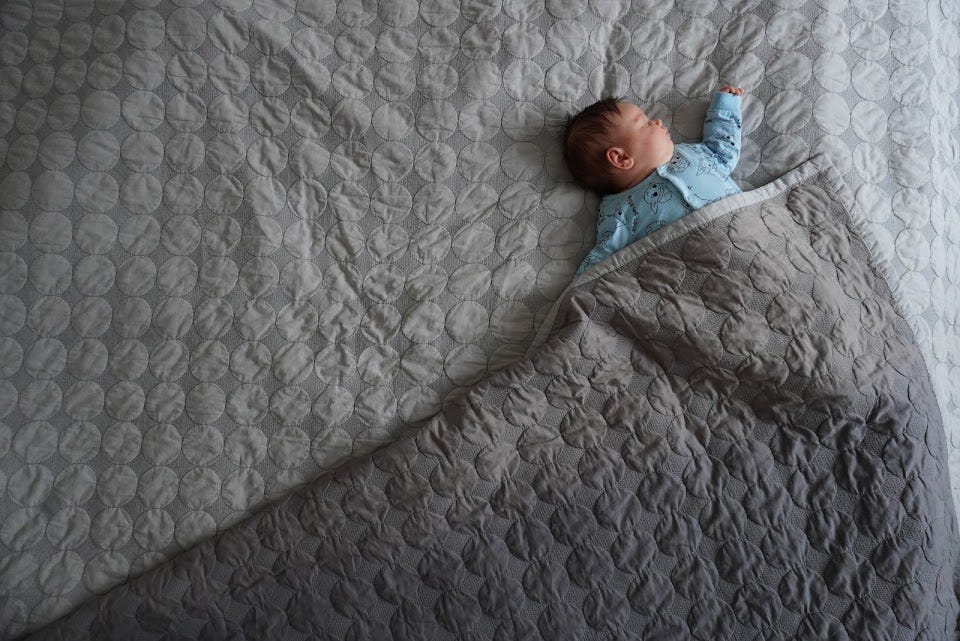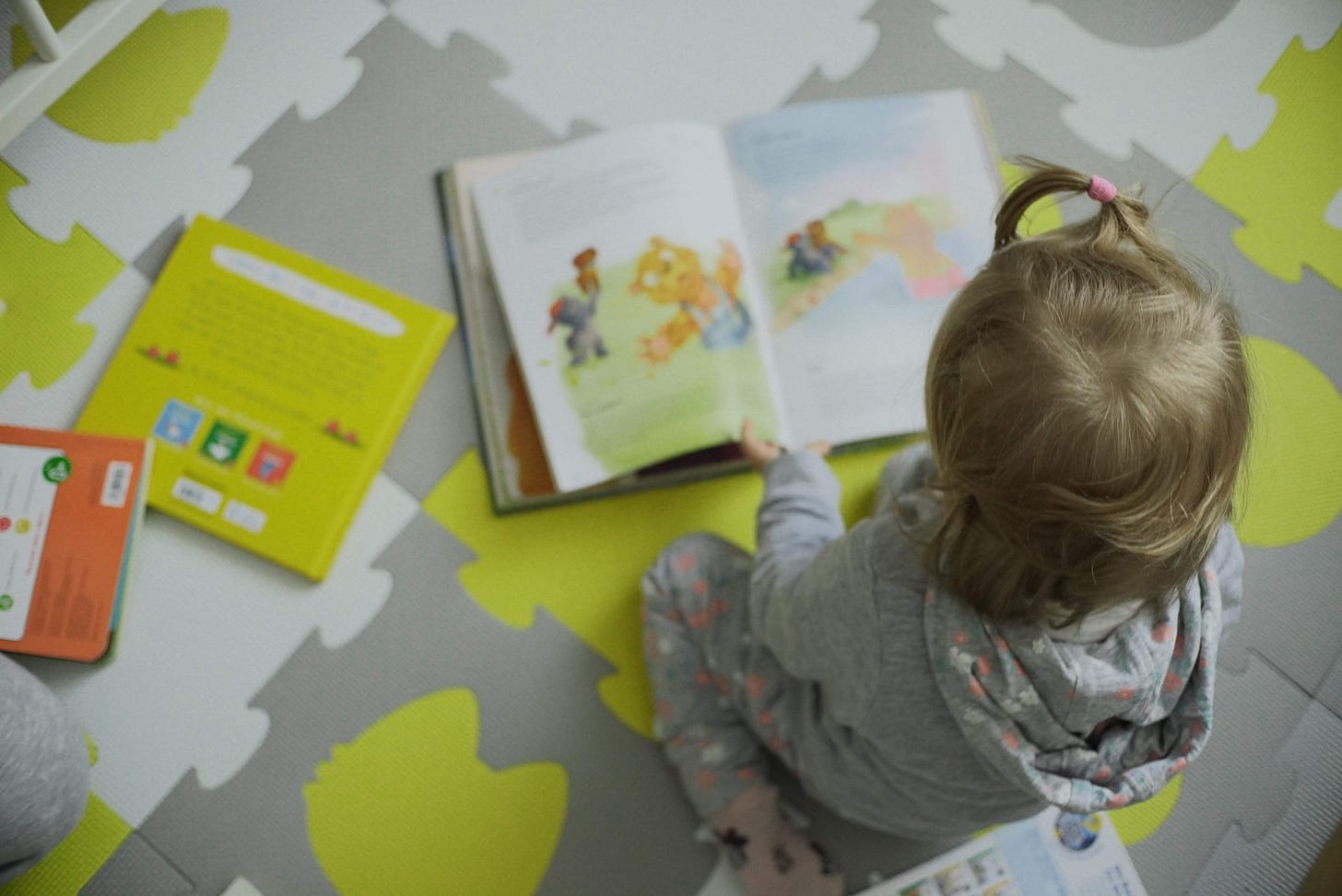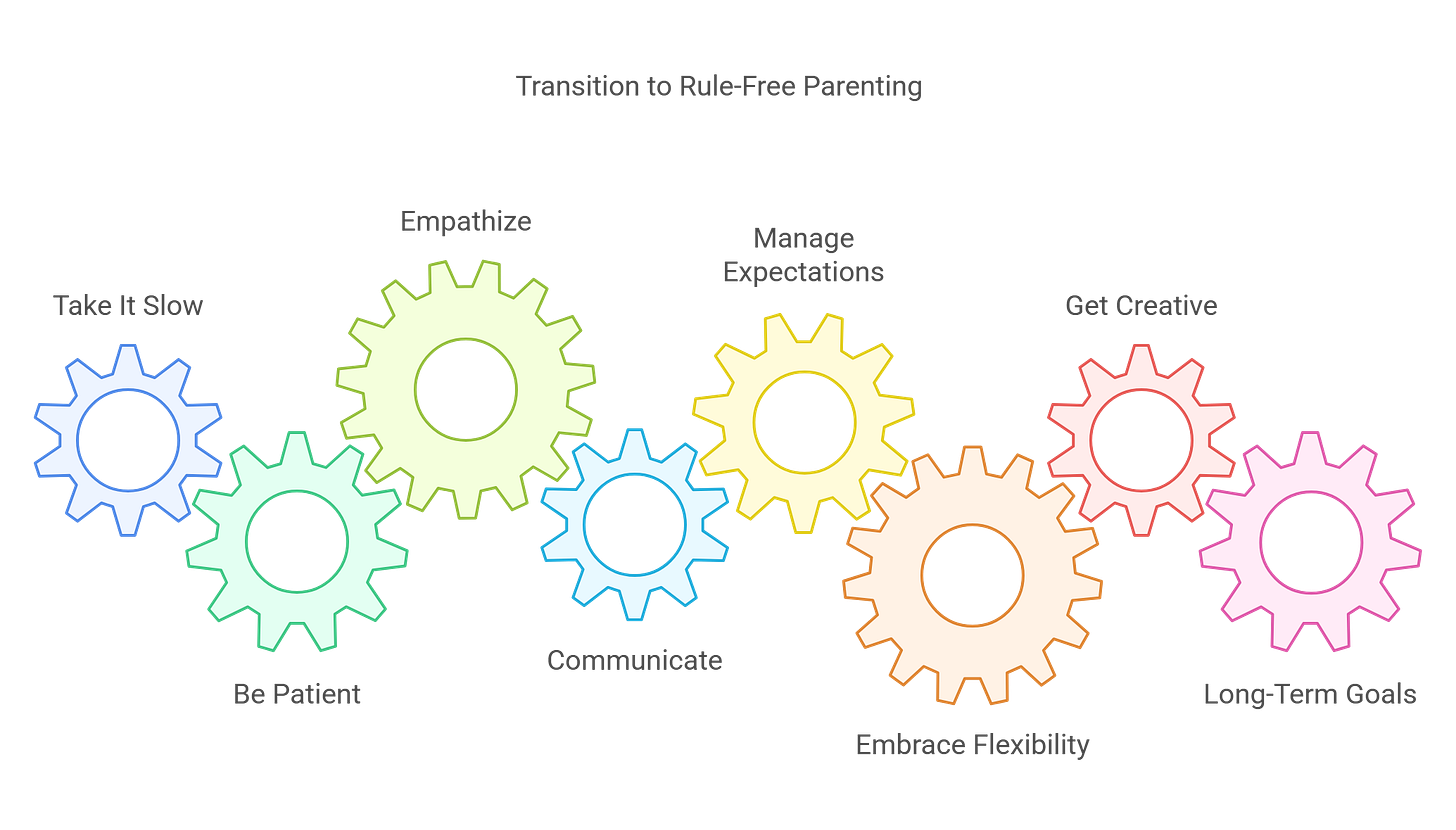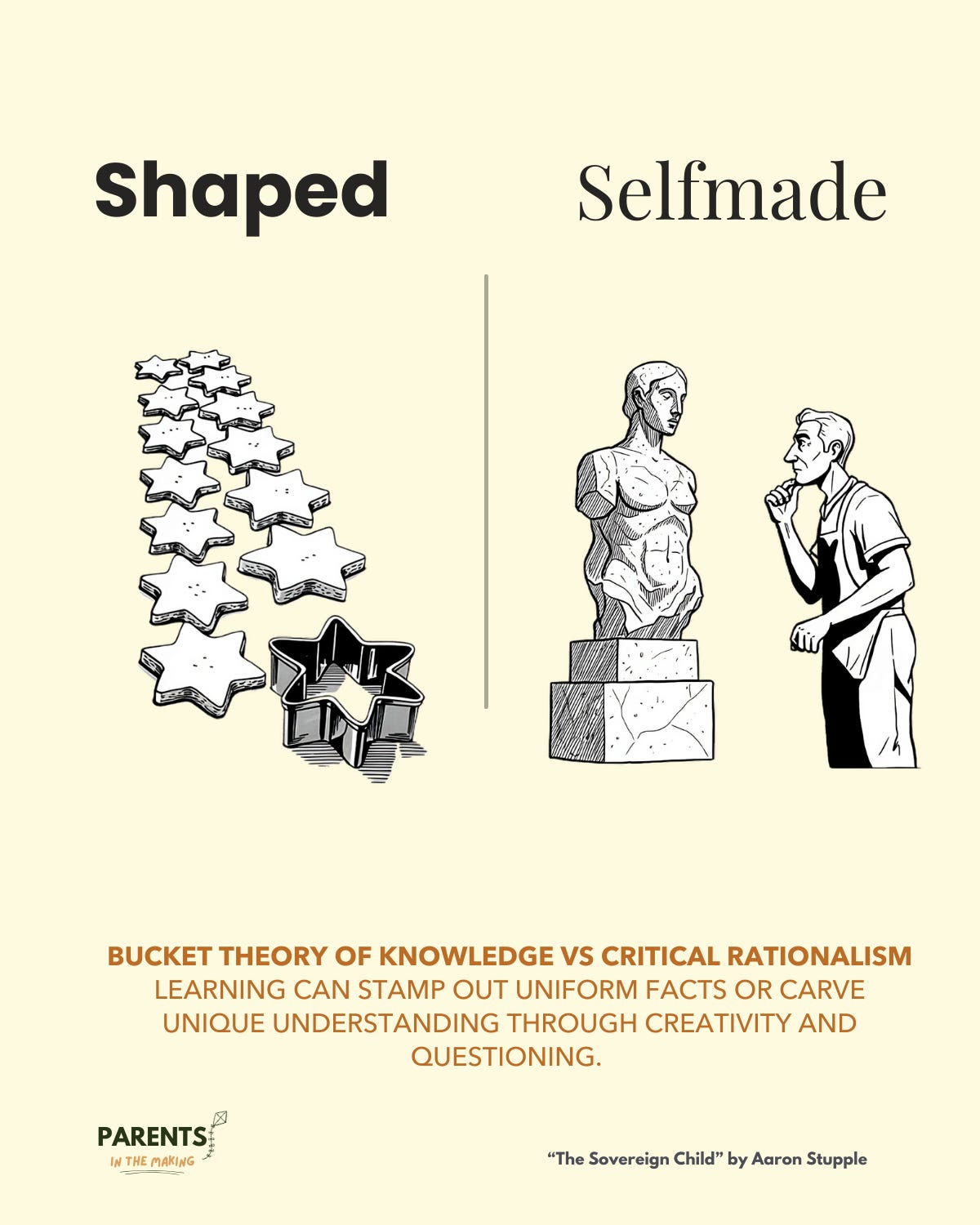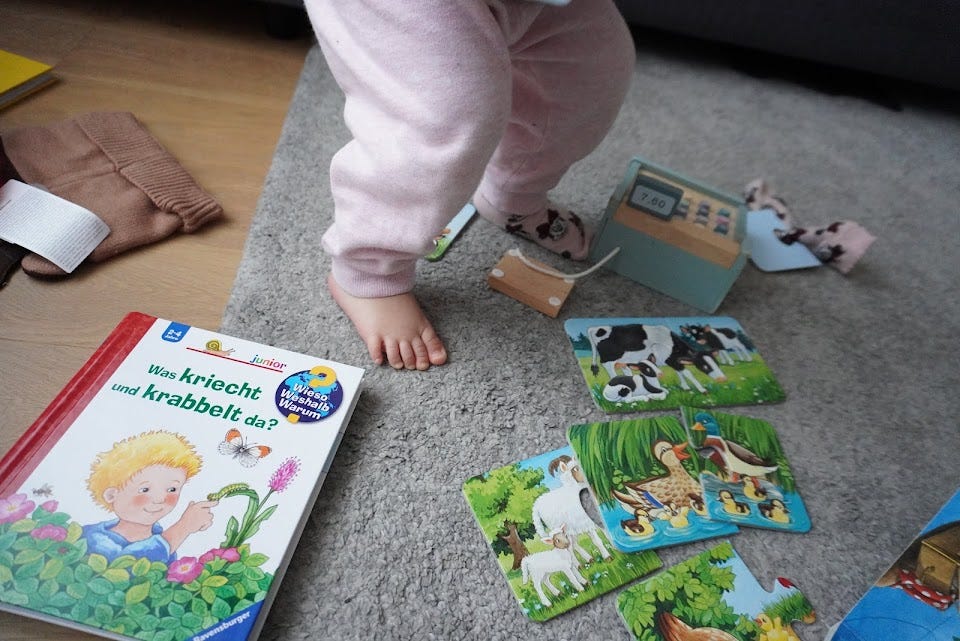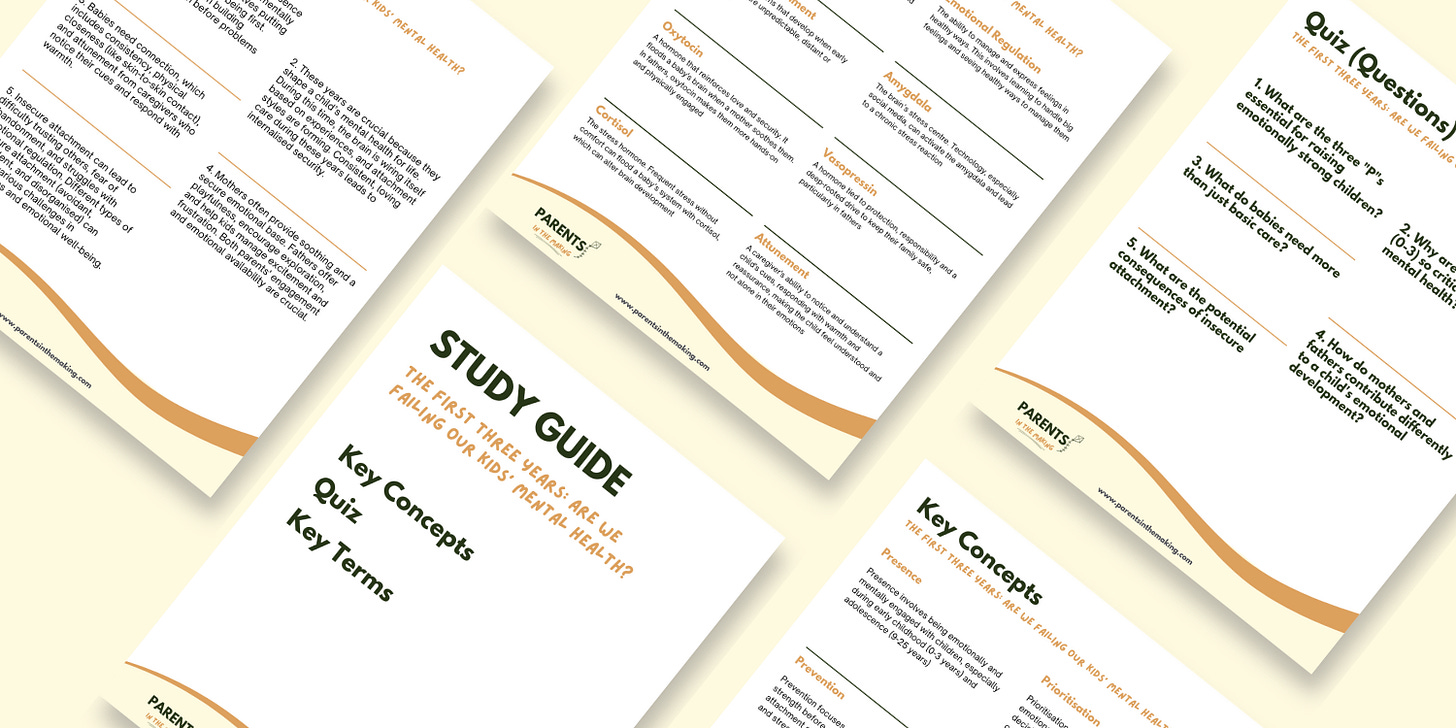What If You Stopped Controlling Your Child and Everything Got Better?
A practical summary of "The Sovereign Child": How rule-free parenting builds autonomy, emotional intelligence, and real decision-making through everyday trust and collaboration.
Does bedtime feel like a battle?
Another toothbrush standoff?
You’re not alone.
These daily struggles leave many parents quietly wondering, “Am I doing this right?”
Most advice says: tighten the rules. Stay firm. Be consistent.
But what if the problem isn’t too few rules…
…it’s rules in the first place?
The Sovereign Child offers a radical shift: parenting as partnership, not power. Inspired by the “Taking Children Seriously” philosophy, it trades control for collaboration.
This doesn’t mean chaos. Or raising kids with no limits.
It means raising kids who think for themselves with you, not against you.
In this post, we’ll break down:
Why conventional rule-heavy parenting often backfires
The “Foul Four” behaviors that escalate conflict (and how to handle them differently)
How to raise autonomous kids through trust, curiosity, and respectful guidance
This is not permissiveness. It’s clarity without coercion and it just might change everything, starting with your next bedtime.
What Is Rule-Free Parenting?
Let’s be honest, rules don’t always work the way we hope.
You set one. They push back. You explain. They resist.
Suddenly you're stuck in a loop of consequences, negotiations, and repeating yourself…..again.
It’s exhausting.
Rule-free parenting starts by asking a different question:
What if the goal isn’t control?
What if it’s connection?
This approach doesn’t mean kids run the show while you watch from the sidelines. It means moving away from the idea that obedience equals success and toward something more meaningful.
Think of it like this: you’re not giving up on guidance.
You’re giving up on the illusion that it only works when it’s enforced.
Instead of “How do I make them listen?”, the question becomes, “How can we figure this out together?”
That one shift can change everything.
Inspired by the philosophy of Taking Children Seriously, rule-free parenting sees your child as a full person. Not a problem to manage. Not a project to perfect. A person with real needs, real thoughts, and a real drive to grow.
At the center is the idea of the sovereign child.
A child who doesn’t just follow orders, but learns through real choices.
Who gets the space to try, mess up, recalibrate and keep going with you beside them, not standing over them.
You’re still the adult. Still the guide. But not the boss of every moment.
It’s a shift. And yeah, it can feel strange at first, especially if you were raised on “Because I said so.”
But when you start to see your child differently, something else shifts too. The tension. The power struggles. The endless standoffs.
They start to loosen.
And in their place?
A relationship that feels a whole lot more like respect and a lot less like a tug-of-war.
The Foul Four: The Hidden Cost of Keeping Kids in Line
Rules feel safe. Predictable.
They give the illusion that, if you just set the right ones and stick to them, everything will run smoothly. No tantrums. No standoffs. Just calm, cooperative parenting.
If only it worked that way.
The truth? Rules often create more of the very behavior they’re trying to prevent. And they do it in ways that aren’t always obvious until something starts to feel off.
Let’s talk about the Foul Four: four quiet but powerful ways rule-heavy parenting can erode trust, connection, and resilience.
1. The Parent-Child Relationship
When rules dominate, you become the gatekeeper of everything: snacks, screens, sleep, even small choices. You hold the keys. Your child figures out how to get past them.
And suddenly, you’re on opposite sides of the same door.
You probably know the signs: bending the truth, telling small lies, quietly sneaking around just to avoid another “no.”
That’s not defiance. That’s strategy.
In a system built on control, hiding becomes a survival skill.
Even soft enforcement,calm tone, clear expectations, logical consequences. It can send the same message: I’m watching you because I don’t trust you to get it right.
Kids feel that deeply. And what do they do? They adapt.
They say what they think you want to hear. They stop sharing the full story. They start calculating what they can get away with.
Not because they’re dishonest. But because the relationship has become a game of rules, not a space for honesty.
2. Negative Self-Perception
Rules can send quiet messages kids carry for years.
“Don’t touch that.”
“Stop crying.”
“Do as I say.”
At some point, those moments stop feeling like guidance and start sounding like criticism. Kids don’t always hear “be careful”—they hear “you can’t be trusted.”
Being told to control their emotions without anyone asking why they feel upset? That’s not calming. It’s confusing. And it plants doubt.
Over time, they start believing their feelings don’t matter. Or worse, that something’s wrong with them.
And that voice? The one that questions their instincts? It doesn’t fade with age. It follows them.
3. Confusion About Problems
Rules can manage behavior,but they rarely teach the reason behind it.
Take brushing teeth. If it’s framed as “Do it because I said so,” the lesson becomes about avoiding your reaction, not understanding why clean teeth matter.
Same with manners.
“Say thank you” turns into a reflex. A box to tick.
Not a sign of real gratitude.
When kids don’t know why something matters, they don’t connect with it. They just follow the script.
And once the rule disappears?
So does the meaning.
4. Confusion About How to Solve Problems
Rules often teach kids to look outward for answers.
“What do the grown-ups want me to do?” becomes the default question.
And that works until no one’s around to decide for them.
Think about a sibling fight.
If an adult steps in every time, the kids don’t learn to work it out. They just wait for someone else to make the call.
Over time, that chips away at their independence.
They doubt their ability to handle things on their own.
And solving problems starts to feel like something only grown-ups can do.
So, What’s the Alternative?
Rules can keep things running, for a while.
But the real question is: what are they teaching underneath the surface?
Because it’s one thing to get through the bedtime routine.
It’s another to raise a child who understands why sleep matters, who feels safe enough to talk back, push back, and still know they’re loved.
Kids need guidance, no doubt. But they also need space to think and feel.
To try things, screw up, fix them, and try again.
This isn’t about tossing every rule. It’s about shifting the reason they’re there.
Less control. More collaboration.
Not “how do I make them behave?” But “how do we grow through this together?”
Because in the end, rules don’t raise kids.
Relationships do.
Core Principles of Rule-Free Parenting
It’s so easy to fall back on rules when things get messy.
Stop that. Do this. Because I said so.
In the moment, it feels like control.
But underneath? It’s often disconnection.
Rule-free parenting takes a different path. One that doesn’t treat your child like a problem to manage, but like a person who’s learning to live in the world, with you beside them instead of above them.
This approach isn’t about letting kids run wild. It’s about helping them build real decision-making skills. Not by handing over the reins completely, but by showing them what thoughtful freedom actually looks like.
You’re still involved.
You’re still guiding.
But your goal isn’t to shape their behavior, it’s to support their growth.
So what makes it work?
Let’s look at the core principles that keep rule-free parenting grounded, clear, and deeply respectful of who your child is becoming.
1. Prioritize Understanding, Not Control
This is where it begins: shifting from “Do what I say” to “Let’s figure this out.”
Your role isn’t to micromanage every decision. It’s to help your child make sense of what’s around them, and what’s going on inside them.
That means listening, not just correcting.
Asking, not just instructing.
When you really hear their thoughts, when you see things from their perspective, the conversation changes. It’s no longer about obedience. It’s about helping them build the thinking skills and emotional awareness they’ll carry with them long after you’re out of the room.
2. Give Freedom to Explore
Kids need space. Not just physical space, but mental and emotional room to follow their curiosity—without someone constantly steering the wheel.
This doesn’t mean chaos. It means trust.
Let them try. Let them mess up. Let them figure out what lights them up.
You’re still there, quietly holding the edges. But you’re not the one filling in every blank. You’re allowing space for discovery and that’s where confidence grows.
3. Focus on Problem-Solving Together
Conflict doesn’t need a referee. It needs a partner.
Instead of falling back on rules, try pausing and getting curious: What’s this really about?
Ask questions. Hear their side. Then start looking for solutions together.
Not every answer has to be perfect.
In fact, some of the best learning happens when a solution doesn’t work, and you regroup as a team.
This isn’t about control. It’s about collaboration. It teaches your child that their needs matter and that yours do, too.
4. Trust and Respect Above All
Respect isn’t something kids have to earn. It’s something they need to receive, to know how to give it in return.
Rule-free parenting starts by treating your child like a full person. Not a problem to fix. Not a future adult. A person, right now, with their own thoughts, boundaries, and preferences.
You still guide.
You still lead.
But you do it with the belief that your child is capable and worth listening to.
That kind of trust builds a bond no rule ever could.
5. No Coercion, Ever
Coercion wears a lot of faces: pressure, guilt, manipulation, even “gentle” threats masked as consequences.
It doesn’t build cooperation. It builds fear. It teaches kids to obey, not to think.
Rule-free parenting leaves that behind.
No emotional pushing. No shame tactics. No “if you don’t, then…..”
Instead, it builds a space where mistakes are safe.
Where kids feel supported, not cornered.
Where they learn that independence doesn’t mean doing it all alone, it means knowing you’re there when they need you.
Wrapping It Up
These principles—understanding, freedom, collaboration, respect, and trust—aren’t just parenting tools. They’re relationship builders.
You’re not raising someone to follow rules. You’re raising someone to trust themselves.
And maybe the best way to do that, is by being the kind of parent they don’t have to hide from.
What Parents Worry About Most (And What Helps Instead)
Rule-free parenting can feel... unfamiliar.
It challenges a lot of what most of us were taught about raising kids.
And with that comes hesitation.
“But what about safety?”
“What if they’re on screens all day?”
“Isn’t this just letting kids do whatever they want?”
These questions make sense. They're honest. They come from love.
So let’s slow things down and look at them - one by one.
Here’s how rule-free parenting handles the hard stuff without relying on constant rules to do the work.
1. Keeping Kids Safe
This is the biggest fear and for good reason.
No parent wants to see their child hurt.
But rule-free parenting doesn’t mean ignoring danger.
It means responding with presence, not pre-set commands.
Your child runs toward the street?
You stop them. Instinctively. Instantly. That’s protection, not permission.
But later, when the moment has passed, you talk about why streets are dangerous. You help them understand, not just obey.
This approach doesn’t remove boundaries.
It roots them in awareness, not fear.
2. Screen Time Isn’t the Problem
Screen time gets a bad rap.
And yeah, kids love their devices.
But is it addiction? Not really, not in the way we think.
Scrolling TikTok isn’t the same as being hooked on cigarettes. It’s engagement, stimulation, sometimes even connection.
Instead of locking down the iPad or handing out time limits like punishments, rule-free parenting asks: Can they learn to manage this themselves?
You talk about how screens make them feel. You reflect on time spent. You nudge them to notice when it’s too much.
The goal isn’t perfect balance.
It’s awareness.
And over time, self-regulation.
3. Dopamine is not a Disaster
Let’s clear this up.
Yes, screens light up the brain. So do jokes. So does dancing. So does biting into chocolate cake. Dopamine isn’t evil, it’s just part of being human.
The problem isn’t that devices trigger dopamine.
The problem is when they crowd out everything else.
Rule-free parenting doesn’t ban the stimulus.
It builds the skill to notice it.
Your child learns to tune in: Do I feel better after that video? Or drained?
They learn to make tradeoffs. They learn what feels good long-term, not just in the moment.
That’s not possible when everything’s decided for them.
4. Worried About What They’ll See Online?
Let’s be real - handing a child access to the internet feels like sending them into a forest with no map.
So much of parenting today involves worrying about what they might stumble across.
That’s a valid concern. Truly.
But blocking everything? Locking it all down and hoping for the best? That won’t teach them how to navigate what does get through.
The goal isn’t to prevent every possible exposure. It’s to make sure they come to you when something confuses or unsettles them.
When kids know it’s safe to talk, without judgment or panic, they’re more likely to ask questions. They’re more likely to think critically.
And they’re far more likely to pause and reflect before clicking “next.”
So instead of shielding them from every risk, start building the skill that really matters:
Can they talk to you about what they’re seeing?
Because if they can, they don’t need perfection.
They need you.
5. Bedtimes Don’t Need to Be Battles
There’s a lot of pressure to keep kids on a strict schedule. Especially when it comes to sleep.
Bedtimes. Wake-up times. Lights out by 8.
And sure, structure matters. But forcing a tired system onto a tired child? That often creates resistance, not rest.
In rule-free parenting, the focus shifts.
It’s less about enforcing the clock and more about helping your child tune into what their body needs.
That might mean staying up too late once in a while.
Feeling grumpy the next day.
Learning from experience.
You’re still there to guide them. To talk about what sleep does for their body and brain. To help them notice how they feel when they’ve had enough rest—and when they haven’t.
Flexibility doesn’t mean chaos. It means respect. It means saying, “I trust you to learn what works, because I’ll help you figure it out.”
Results of Rule-Free Parenting
This approach isn’t just about making daily life feel less like a tug-of-war.
It’s about raising kids who trust themselves. Who think clearly, act with care, and feel confident in who they are.
The ideas behind Taking Children Seriously aren’t about skipping boundaries or being hands-off.
They’re about planting something deeper, something that grows stronger with time.
Here’s what that can look like.
1. Confidence That Comes from Within
When kids grow up making real decisions, they start trusting their own judgment.
They don’t wait for permission.
They don’t rely on praise to feel good.
They know what makes sense for them and they move forward with that clarity.
Of course they’ll stumble. Everyone does.
But instead of shutting down, they regroup.
They learn. They try again.
And each time, they feel a little more sure of themselves.
That kind of confidence isn’t loud. It’s steady.
And it doesn’t come from following rules.
It comes from being trusted.
2. Less Policing, More Connection
Without constant rules hovering overhead, something shifts.
Kids stop bracing for correction and start opening up.
They tell you what’s really going on.
They ask hard questions.
They admit when they’re scared or unsure, because they know they’ll be heard—not punished.
That kind of trust doesn’t fade with age.
It deepens.
And one day, when they’re older and facing something real, you’ll be the one they come to, not because they have to, but because they want to.
3. From Rule-Follower to Problem-Solver
Life doesn’t hand out step-by-step instructions.
So why raise kids who only know how to follow them?
In rule-free parenting, kids learn to pause, think, adjust.
They try things. Some of those things work. Some don’t.
But either way, they keep going.
They don’t freeze when things fall apart.
They look for another way through.
This is how resilience is built - not by memorizing rules, but by learning how to solve real problems in real time.
4. They Feel Worthy
When kids grow up in an environment where their voice matters, they don’t learn to shrink themselves.
They learn to stand tall.
They’re not punished for being emotional.
They’re not teased for being different.
They’re accepted for who they are, even when they’re still figuring that out.
And that kind of acceptance doesn’t just feel good in the moment.
It builds self-worth that lasts.
They don’t just know they’re loved, but believe they’re enough.
5. Curiosity That Doesn’t Depend on Gold Stars
Take away the stickers, the rewards, the “if you finish your homework, then...”
What’s left?
Curiosity.
Kids who aren’t managed by incentives learn to notice what sparks their interest.
They dig into things because they want to, not because someone’s watching.
And that kind of drive?
It doesn’t wear off when school ends.
It follows them into everything they do, because they’re not learning for approval.
They’re learning because it matters to them.
6. Why Emotions Need Room, Not Rules
What’s more useful than knowing how to stay steady when life gets messy?
Rule-free parenting gives kids that space. Instead of bottling things up or reacting without thinking, they learn to name what they’re feeling and express it in a way that makes sense to themselves and to others.
They don’t just hold it in. They don’t just let it explode.
They figure out how to carry their emotions without letting those emotions carry them.
And that makes everything (relationships, friendships, daily frustrations) easier to handle.
7. Freedom Fuels Creative Thinking
Give kids freedom, and they start making things.
Ideas. Stories. Strange inventions with cardboard and tape.
They follow their curiosity, not someone else’s checklist.
They test things out. They imagine different ways of doing the same old task. And they come up with answers you’d never think of.
This isn’t about drawing or painting.
It’s about thinking for yourself.
And that shows up everywhere.
8. Yes, the Shift Might Feel Messy at First
Let’s be honest, switching from a rule-heavy approach to one built on trust can feel shaky at first.
Kids will push, test and wonder if you really mean it.
That’s part of the process.
There will be a stretch of trial and error. They’ll try things out, see where the edges are, maybe even try to bend them.
But here’s what matters: with consistency, with calm, with time - they adjust.
Eventually, they stop testing and start understanding.
This isn’t about getting away with things.
It’s about being trusted.
And once that clicks, you’ll start to see it, not just the freedom, but the responsibility that grows right alongside it.
How It Works in Real Life
Let’s be honest, parenting without a long list of rules can sound a little out there. Maybe even risky.
But in real life? It’s not about tossing structure out the window. It’s about trust. It’s about working with your child instead of managing them.
Here are a few everyday moments where rule-free parenting really shines.
Food Without Fights
No more “three more bites.” No more broccoli standoffs.
Instead of forcing a clean plate, you offer a range of healthy options and let your child decide what, and how much, to eat.
They skip the veggies today? Fine. They might try them tomorrow when no one’s watching. If they have a favorite food, you honor it—while gently introducing new ones alongside.
That’s how trust builds and how stress around meals fades.
No Bedtime? Here’s How That Works
No set bedtime? You heard that right.
Rather than lights out at 7:30 sharp, you offer a calm evening routine: storytime, dim lights, quiet time and let them tune into their body’s signals.
If they stay up too late and feel it the next day, they learn something real: what tired feels like, and why rest matters. They start listening to themselves instead of just following a schedule.
Screens: From Control to Conversation
Screen time doesn’t have to be a fight.
Instead of laying down rigid limits, you open a conversation. Do they want to watch a show, play an app, head outside?
Sometimes they’ll go for the screen. Sometimes they’ll get absorbed and lose track of time. That’s when you check in, not clamp down.
You talk about how they feel afterward. You help them notice what’s too much. They start to self-regulate without needing a timer.
Win-Win Solution
You catch them drawing on the wall. Instead of scolding, you pause.
Maybe it’s the size of the wall. Maybe it’s the blank space, or the feeling of doing something bold.
You tape up a big sheet of paper or offer a chalkboard wall. You redirect without shutting down the impulse.
The creativity stays alive. The walls stay clean. No one ends up in a power struggle.
Chores That Don’t Feel Like Chores
Instead of assigning tasks like a manager, you bring them into the process.
“Want to help me sort these by color?”
“Can you be in charge of the spice sprinkle?”
You add music. You keep it light. And suddenly the work turns into something else: time spent together, hands busy, energy shared.
It doesn’t have to be perfect. It just has to feel like connection.
Respecting Social Bandwidth
Kids get bored. Adults talk too long. We’ve all been there.
Instead of forcing them to sit through hours of adult conversation, you give them options: play quietly nearby, step into another room, take a breather.
You’re not letting them skip out—you’re teaching them that listening to their limits is okay. That their presence matters, but so does their comfort.
And they carry that kind of self-awareness with them.
It’s About Trust, Not Chaos
This isn’t about letting kids do whatever they want. There are still boundaries, just built together, not handed down like commands.
You’re still the parent. You’re still the guide. But now the relationship is based on respect, not rules.
It takes time. And patience. And sometimes a deep breath when the old habits try to sneak back in.
But what you build in return?
A child who thinks for themselves.
Who listens to their body.
Who speaks up.
Who trusts you, because you trust them.
How to Start Without Overhauling Everything
Making the move away from strict rules can feel like a lot. But it doesn’t have to be all or nothing.
You’re not throwing structure out the window. You’re loosening your grip. Giving your child space to think, choose, and figure things out—with you right there beside them.
And no, it doesn’t have to happen all at once.
One Step at a Time Is Enough
Focus on one area first. Something simple.
Let your child pick their outfit. Ease up around meals.
Small shifts give both of you time to adjust. It’s not about changing everything overnight—it’s about creating space for something new to unfold, gradually.
Give It Room to Feel Messy at First
Some days, you’ll fall back into old habits. You’ll want to lay down a rule just to feel in control again.
That’s normal.
Your child might struggle too, they’ve gotten used to being told what to do. They need time to figure out what freedom actually looks like.
The key? Keep going. No one’s asking for perfection, but intention.
Pause Before You React
Before jumping in with a rule or a consequence, stop and wonder:
What might they be trying to tell me with this behavior?
Are they exploring? Pushing limits? Trying to connect?
When you respond with curiosity instead of control, you don’t just avoid conflict—you understand them better.
You Need to Be a Team
If one of you is loosening the reins while the other is tightening them, things will feel confusing, for everyone.
Talk often. Share what’s working. Be honest about what feels hard. This isn’t about having a perfect plan, it’s about staying connected while the rules shift.
You Don’t Owe Anyone an Explanation
Your extended family may not love this new approach. That’s okay.
You’re not parenting to please them. You’re building a relationship that works for your child.
If your kid steps away during a long visit or skips the formalities, you can choose how much you want to explain or not explain at all.
You’re raising an independent thinker. That will make people uncomfortable sometimes.
Parenting Isn’t a Formula
Things won’t always go as planned.
And that’s not failure, it’s feedback.
Try something different. Adjust as you go. You’re learning, your child is learning, and the process itself is the progress.
You Don’t Have to Parent Like Your Parents Did
When you’re not stuck in “because I said so,” new possibilities open up.
Drawing on walls? Maybe they need more space to create.
Making noise? Maybe they need an outlet, not a reprimand.
Look for the need behind the behavior and imagine a way to meet it together.
This Isn’t About Today
This isn’t about avoiding meltdowns or getting through the day without a fight.
It’s about raising someone who knows how to make good choices, because they’ve had the space to practice.
You’re not just managing behavior. You’re building skills. You’re planting trust. You’re helping them grow into someone who trusts themselves.
The Ideas Behind Rule-Free Parenting
Most of us were raised on rules.
Do this. Don’t do that. Because I said so.
We grew up with the idea that adults have the answers and kids are here to learn from us. But what if that’s backward? Or at least incomplete?
Taking Children Seriously (TCS), a philosophy influenced by Karl Popper, flips that script. It sees kids not as blank slates, but as active thinkers—people with ideas, theories, and the ability to grow knowledge the same way adults do: through curiosity, conversation, and trial and error.
This isn’t about throwing facts at kids. It’s about inviting them to think alongside us.
Popper believed knowledge doesn’t come from someone telling you “the truth.” It starts with a guess. A question. A hunch.
Your child says, “Clouds get too heavy and cry.”
You don’t have to jump in with a science lesson. You could say, “What makes you think that?” or “How could we find out if that’s true?”
Now you’re not just teaching, you’re exploring with them.
That’s what makes this approach different. It’s not about getting kids to say the right answer. It’s about keeping their drive to ask alive.
The old model treats kids like sponges. Soak up the lesson. Get the grade. Move on.
But kids aren’t empty. They’re already forming ideas, constantly.
A toddler stacking blocks is learning about balance. A preschooler terrified of the dark is working through what’s real and what’s imagined. When we dismiss these moments, we miss the chance to meet them where they are.
Even the weird ideas matter. Especially the weird ones.
It’s easy to shut things down with a quick “Just do it.” But TCS suggests asking, “What would happen if…?”
Take a coat argument. Instead of “Put it on or else,” try, “What do you think will happen if you don’t wear it?” They might get cold. They might not. But either way, they’re learning something and it’s sticking a lot better than a forced command.
That’s not permissiveness. That’s real-world problem-solving. With you there to talk it through, not take over.
This is the difference between two ways of seeing how people learn.
The Bucket Theory of Knowledge sees learning as passive. Information is poured in from the outside—correct facts, correct answers, correct behaviors. In this view, education (and parenting) is about control. The goal is to fill the child up with the “right” ideas.
But that model misses something essential: creativity, agency, and the child’s own mind at work.
Critical Rationalism, on the other hand, says knowledge is created - not received. It grows through trial and error, by making guesses and testing them, through questions and conversations. It’s active, not passive.
This idea is at the heart of Taking Children Seriously and it’s what rule-free parenting supports.
Because learning isn’t obedience.
It’s not quiet compliance.It’s a sovereign act.
Real Growth Happens When Kids Make Their Own Choices
This doesn’t mean kids are left on their own. You’re still the anchor.
But you’re offering supported freedom.
You help when they ask and step in when it’s truly needed. Otherwise, you make room for them to figure things out on their own.
They forget homework? They learn to plan better next time.
They blow through their allowance? They learn about limits, not because you punished them, but because the experience itself taught them something.
None of this requires a total overhaul.
Start small.
Ask questions and pause before correcting.
If your child says something strange, say, “Tell me more.”
If they’re frustrated with a rule, ask, “What would you change?”
You’ll be surprised by their insight. You might find they don’t want to break every rule, they just want to be heard.
The Takeaway
This isn’t about being hands-off. It’s about treating kids like people with real thoughts and ideas, ones that deserve your attention, even if they’re messy or unfinished.
Rules can still exist. But they’re built with your child, not for them. That’s the difference.
It’s slower. It’s sometimes harder.
But it’s real.
And in the end, that’s how you raise someone who can think for themselves - not just someone who knows how to follow directions.
Conclusion
What if parenting wasn’t about punishment, obedience, or control?
What if it focused on collaboration, respect, and truly seeing our kids for who they are?
That’s the heart of rule-free parenting, inspired by the ideas behind Taking Children Seriously.
Let’s be clear: this isn’t permissiveness. It’s not about letting kids do whatever they want.
It’s about stepping back from authority-based parenting and stepping into something deeper—something that treats children as people with real thoughts, real needs, and real agency.
It asks us to raise humans who don’t just follow rules, but know how to ask, Is this right?
Does this make sense?
What are my other options?
That’s a bigger shift than it sounds.
The traditional model assumes kids need control to stay on track. That if you don’t enforce, they won’t “turn out right.”
But what if that assumption is wrong?
This approach invites you to see your role differently - not as the enforcer, but as the guide.
Someone who helps your child puzzle things out, work through frustration, and develop their own internal compass.
It changes everything, from the tone of your daily conversations to the way you show up in a moment of conflict.
Let’s be honest: kids aren’t blank slates. But they’re not tiny adults either.
They’re thinkers. Constantly experimenting. Constantly questioning.
That moment your preschooler insists monsters are real? That’s not just fantasy,it’s theory building.
That meltdown before dinner? That’s data collection, expressed through big emotions.
When you treat kids like people with working theories (not problems to fix) you shift the whole relationship. It becomes about connection, not correction.
And that creates something rare: trust that runs both ways.
Conflicts still happen. The last cookie. Screen time. Bedtime.
But instead of defaulting to “Because I said so,” you pause.
You ask: What’s really going on here?
Why does this matter to them?
How can we solve this in a way where they feel heard, not shut down?
That’s not always quick. Or easy.
But it teaches your child how to collaborate. How to think through challenges.
How to problem-solve with someone, not against them.
Why bother? Because the long-term tradeoff is worth it.
Kids raised this way often grow into people who:
Think for themselves
Own their decisions
Handle emotions without fear
Try things, even when they might fail
Feel connected to the people guiding them
That’s not a trend. That’s the foundation for a healthy adult life.
It’s clear that not everyone’s going to understand. Some will say it’s “too soft.”
That it lacks discipline.
But think about what traditional discipline can create: resentment, rebellion, fear.
By moving away from that, you’re giving your child something better.
You’re choosing trust over fear. Respect over control.
And yes, there will be messy moments.
You might doubt yourself. You’ll make mistakes. But growth is messy, for them and for you.
This isn’t just parenting advice.
It’s a way of treating people with care, curiosity, and humility.
So the real question is this: What kind of world do you want your child to grow up in?
Start building that world at home.
With fewer rules.
More trust.
And a deeper belief that your child is already someone worth listening to.
Audio Summary
Study Guide
Visual Metaphors
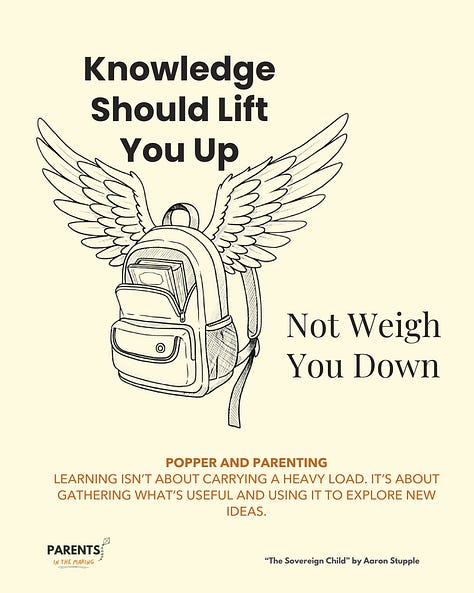

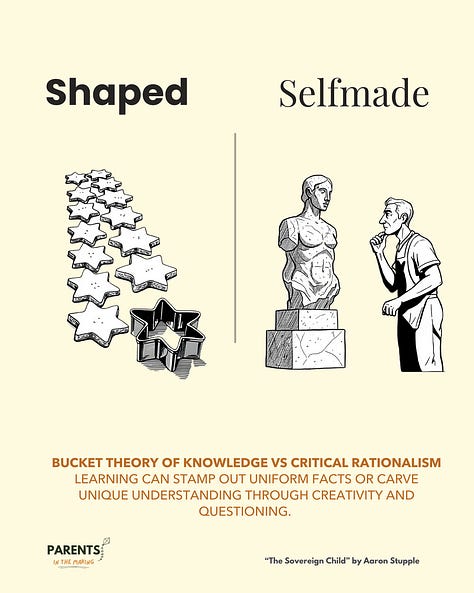

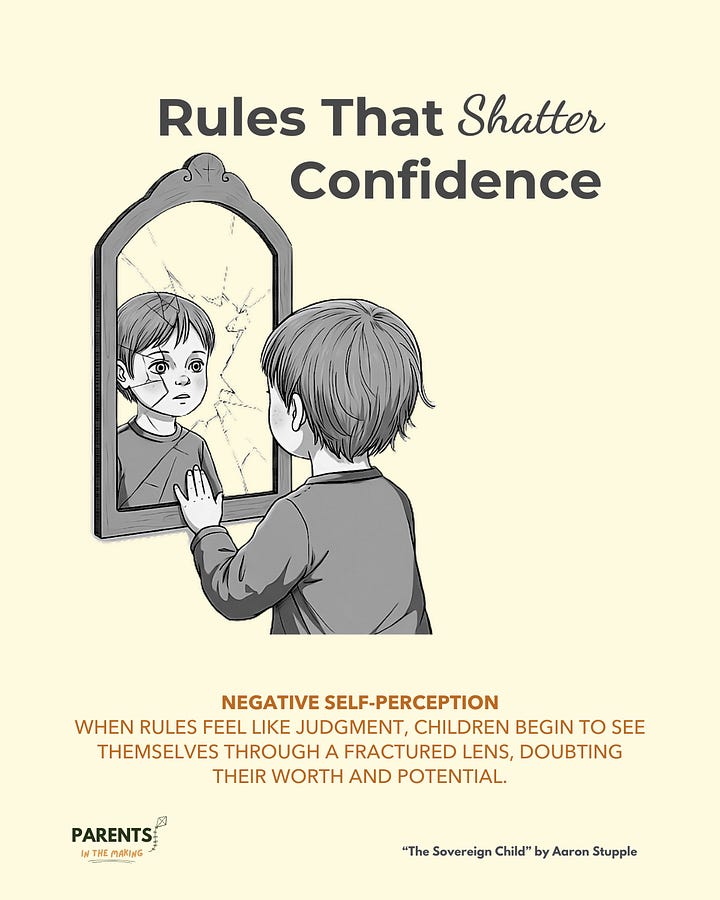

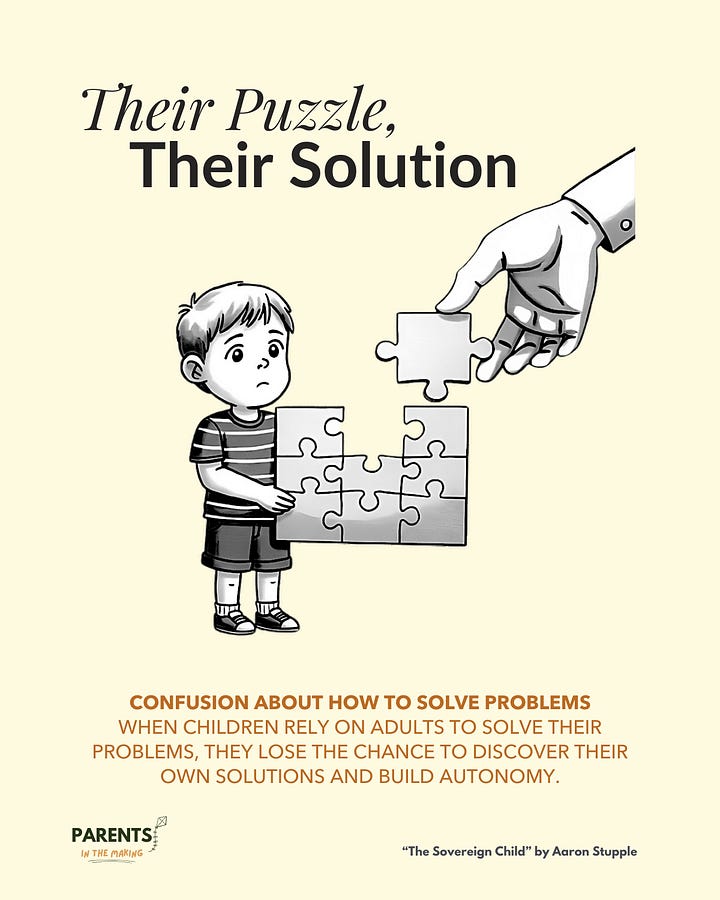
References
Stupple, A. (2025). "The Sovereign Child: How a forgotten philosophy can liberate kids and their parents." Conjecture Institute.





